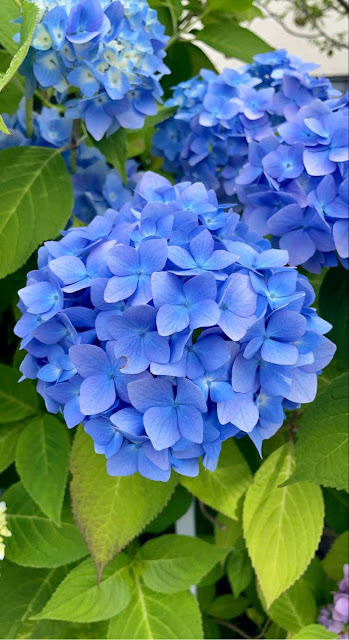The Hydrangea Macrophylla Flower
The Hydrangea macrophylla Flower, commonly known as bigleaf hydrangea, is a popular ornamental plant known for its large, showy flower clusters. Here are few key details about Hydrangea macrophylla:
1. Appearance: It has broad, glossy leaves and produces large, spherical or flat-topped clusters of flowers. The flowers can be pink, blue, or white, often depending on the soil pH.
2. Flower Color and Soil pH: The color of the flowers is influenced by the pH of the soil:
a. Acidic soils (pH below 6.0) typically produce blue flowers.
b. Neutral to alkaline soils (pH above 7.0) generally yield pink flowers.
3. Cultivation:
a. Light: They prefer partial shade but can tolerate full sun in cooler climates.
b. Soil: Well-drained, fertile soil with ample moisture is ideal.
c. Watering: Regular watering is necessary, especially during dry periods.
4. Pruning: Pruning should be done after the flowering period, usually in late summer. It helps maintain the shape and encourages healthy growth.
5. Varieties: There are several varieties and cultivars, each with unique characteristics such as flower shape, size, and bloom time. Popular ones include 'Endless Summer' and 'Nikko Blue'.
6. Uses: Hydrangea macrophylla is often used in gardens, landscapes, and floral arrangements due to its attractive flowers and foliage.
Certainly! Here are some additional details about Hydrangea macrophylla:
Growth and Care:
1. Planting Time: The best time to plant Hydrangea macrophylla is in the spring or fall to avoid the extreme temperatures of summer and winter.
2. Spacing: When planting, space the plants about 3 to 10 feet apart, depending on the variety and desired effect, to allow for adequate air circulation and growth.
3. Fertilization: Use a balanced, slow-release fertilizer in the spring and again in the summer to promote healthy growth and blooms. Exceed-fertilization can lead to excessive leaf growth at the expense of flowers.
4. Mulching: Applying a layer of mulch around the base helps retain moisture, regulate soil temperature, and reduce weeds.
Pruning Details:
1. Old Wood vs. New Wood: Hydrangea macrophylla can bloom on old wood (last year’s growth) and new wood (current year’s growth), depending on the variety. Understanding this is crucial for proper pruning.
2. Old Wood Bloomers: Prune right after flowering, before buds set for the next year.
3. New Wood Bloomers: Can be pruned in late winter or early spring as they will bloom on the new season’s growth.
4. Deadheading: Removing spent flowers can encourage more blooms and maintain plant health.
Common Pests and Problems:
1. Pests: pests include aphids, spider mites, and scale insects. Regular inspection and appropriate treatments (like insecticidal soap) can manage infestations.
2. Diseases: Susceptible to powdery mildew, leaf spot, and root rot. Ensuring proper air circulation, avoiding overhead watering, and planting in well-drained soil can help prevent these issues.
Propagation:
1. Cuttings: Hydrangea macrophylla can be propagated through softwood cuttings taken in late spring or early summer. Cuttings should be taken from non-flowering shoots and placed in a moist growing medium until roots develop.
2. Layering: Another method involves bending a low-growing stem to the ground, covering it with soil, and allowing it to root while still attached to the parent plant.
Landscape Use:
1. Borders and Hedges: Often used in garden borders, as hedges, or as focal points in landscape design due to their impressive flowers and foliage.
2. Containers: Suitable for growing in large containers on patios or terraces, provided they receive sufficient water and nutrients.
3. Companion Plants: Combine well with shade-loving perennials like hostas, ferns, and astilbes.
Special Considerations:
1. Winter Protection: In colder climates, protect plants from winter damage by applying a thick layer of mulch around the base and covering with burlap or other protective material.
2. pH (Potential of hydrogen) Adjustment: To change flower color, you can adjust the soil pH:
a. For blue flowers, acidify the soil with sulfur or aluminum sulfate.
b. For pink flowers, add lime to raise the soil pH.
Notable Cultivars:
Hydrangea macrophylla is a versatile and beautiful addition to any garden, prized for its striking blooms and relatively easy care requirements.
This plant is valued for its beauty and versatility in garden design, making it a favorite among gardeners and landscapers.









Comments
Post a Comment
If you have any doubt, please let me know, thanks for your love and response